‘Faceless After Dark’ Review: Jenna Kanell Shines in a Cleverly Twisted Take on a Slasher
Faceless After Dark is a future cult classic with unexpected twists and a fantastic performance from its star and co-writer.

Table of Contents
What is Faceless After Dark About?
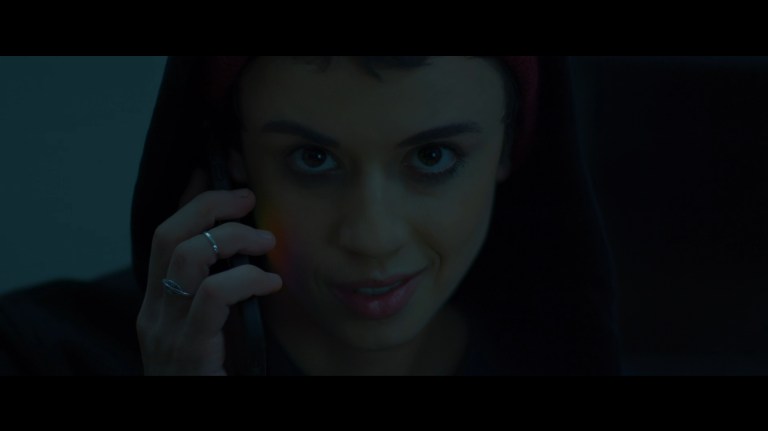
It is necessary to provide a disclaimer before revealing the basic plot of Faceless After Dark. The trailer for the film is excellent in that it doesn’t reveal too much about the movie. If you’ve seen the trailer (posted below) and are interested in watching Faceless After Dark, then don’t read anything else about it. There are twists in Faceless After Dark that are best experienced knowing nothing about the plot. So go watch it now (we give it a high recommendation), then come back here to read the rest of our review. If you don’t mind spoilers, read on.
Faceless After Dark is about Bowie Davidson (Jenna Kanell), an actor whose career stalled after starring in a horror movie about a killer clown. Bowie is frustrated not only by their lack of luck finding a new acting job, but also by having to deal with the darker side of being a public figure. It’s taking a toll on Bowie’s mental health, and the situation gets even worse when a disturbed fan breaks into their home wearing a clown mask and brandishing hedge shears. Now Bowie is in a fight for survival as their life begins imitating art.
The above paragraph is as much as the marketing for Faceless After Dark reveals, and you should STOP HERE if you don’t want a big twist revealed. If you’re still reading, here’s what Faceless After Dark is really about. The home-invasion portion of the movie is just the setup. Bowie is able to fight back and take down the crazed fan. The rest of the film focuses on the immediate aftermath of Bowie’s decisions and actions when fighting for their life. Bowie’s mind takes a dark turn which leads into a series of encounters where Bowie deals directly with some of the people making their life a living hell.
Faceless After Dark Review
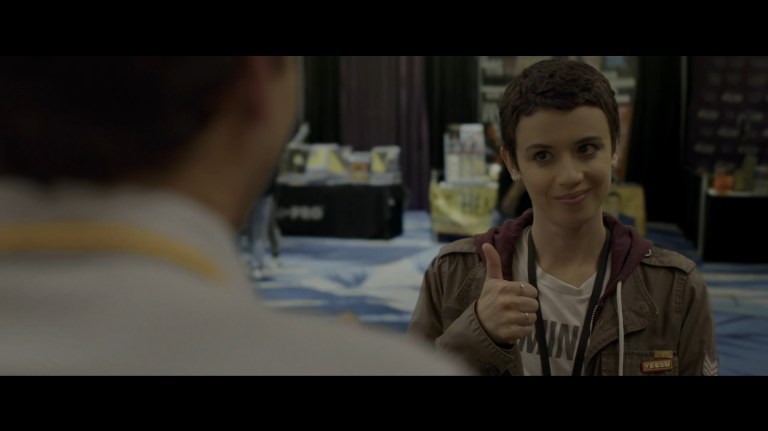
The best part of Faceless After Dark, and the best reason to watch, is Jenna Kanell. Kanell delivers a star-making performance as Bowie. Kanell was already well-known for starring in Terrifier (2016), and with Faceless After Dark she leverages that recognition into something that is personal and remarkable in a way that affirms that she is a force to be reckoned with in the filmmaking community.

Bowie is an interesting character who is given life by Jenna Kanell’s performance. Bowie navigates frustration, anger, fear, sadness, and even a little joy throughout Faceless After Dark, sometimes all within a single shot. A couple of times throughout the film we see Bowie sitting in front of a camera as different emotions wash across their face while they stare straight ahead. One of these shots lasts for a surprising amount of time, and it works wonderfully. The psychological aspects of Faceless After Dark are at the forefront, and it’s well-acted scenes like this that really drive home the character-driven side of the story.
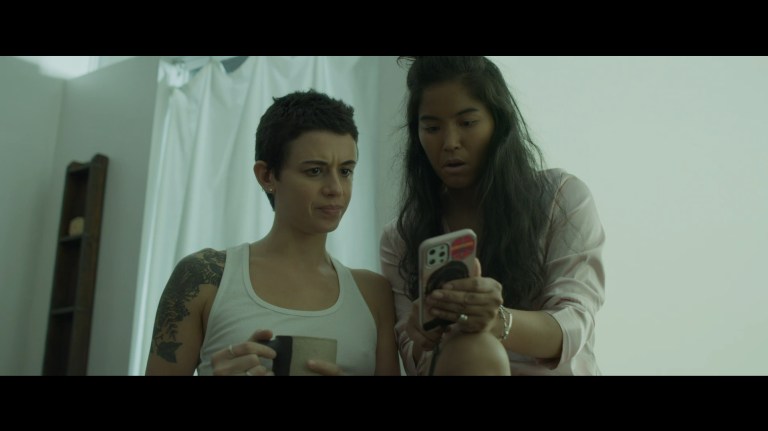
Many of the supporting characters in Faceless After Dark don’t have nearly as much depth as Bowie (with notable exceptions being Bowie’s girlfriend Jessica and their friend Ryan). Throughout the movie, Bowie encounters various people ranging from a fan at a horror convention, to online trolls Bowie meets in person. These characters could be seen as archetypes at best, or caricatures at worst. They all act and sound exactly like what you would imagine those anonymous internet tormentors to be like in real life, without much in the way of nuance or surprise.
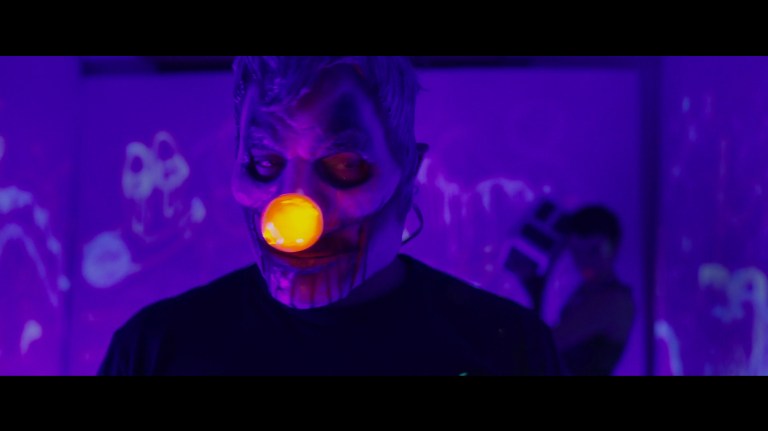
From a certain perspective, the flatness of its supporting characters potentially prohibits Faceless After Dark from feeling truly personal on the level of a deep psychological drama. The movie was co-written by Jenna Kanell, and it almost certainly contains direct inspiration from some of her own experiences (such as, starring in a killer clown movie), but the characters feel more like symbols of general struggles rather than representations of specific encounters. So, the movie feels more broad than specific, but that’s not a complaint.
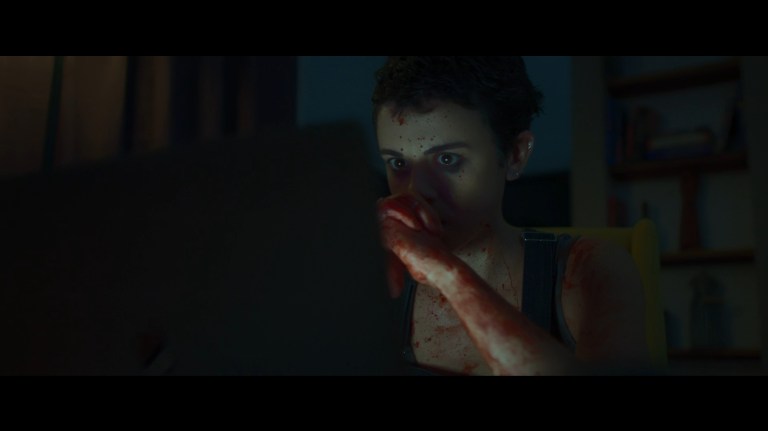
For one thing, keeping the audience at a distance from deeper characterizations of the people Bowie encounters forces the viewer to stay firmly within Bowie’s subjective perspective. Bowie sees these people as their online personas, and it helps justify in their mind (and in ours) the actions they are performing. In this way, it makes Faceless After Dark a “good for her” kind of movie in a way similar to something like Ms .45 (1981). You cheer for Bowie while at the same time feeling bad for what they are driven to do.

Also, by sacrificing a deeper drama between Bowie and the people around them, Faceless After Dark moves more into a genre-film space rather than a pure drama. The best way to describe Faceless After Dark might be something like an anti-slasher movie, where Bowie is both the final girl and the villain (or anti-villain, or anti-hero if you prefer). Inspirations from other genre films are unmistakable, and it definitely appears to be a deliberate choice to make Faceless After Dark a genre movie at its core (as opposed to attempting a deep drama which arguably might not work as well).
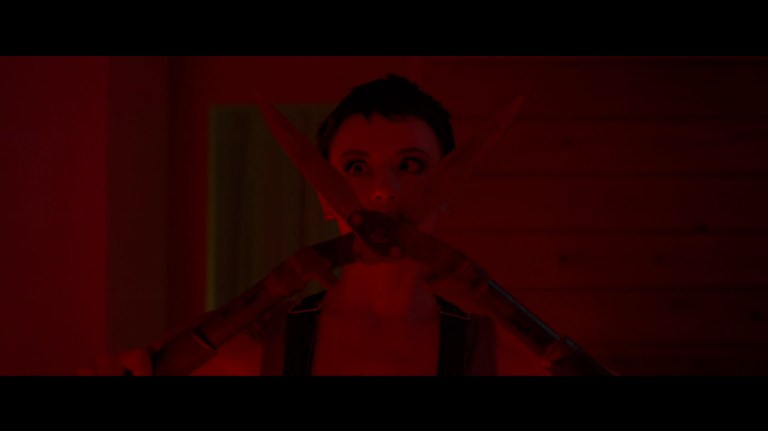
There’s also a layer of meta commentary and dark humor in Faceless After Dark that will appeal to horror fans. This is a horror movie about making horror movies, and about the people who make them. But unlike some other horror movies that attempt to comment on the genre, the meta nature of Faceless After Dark isn’t obtrusive. It’s cleverly handled so that even when it’s funny, it still feels natural and fits within the more serious tone of the overall story. There’s also a level of subversion concerning gender roles and expectations, not just within horror but also in the parasocial spaces created by social media, which could be discussed in an entire article itself. It’s all really well done.
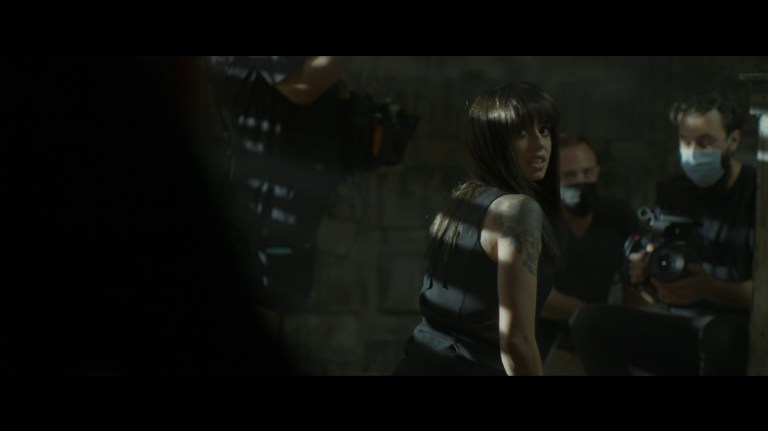
All in all, Faceless After Dark finds a superb balance between a dramatic psychological thriller and a visceral exploitation film. You might see flashes of Psycho (1960) or Sunset Boulevard (1950), but you’ll also see just as many flashes of I Spit on Your Grave (1978) and Pearl (2022). With its strong lead performance from Jenna Kanell, its meta commentary on not just movies but about the people who make movies, and its thread of dark humor, Faceless After Dark absolutely has the potential to be a future cult classic.
Who Will Enjoy Faceless After Dark?
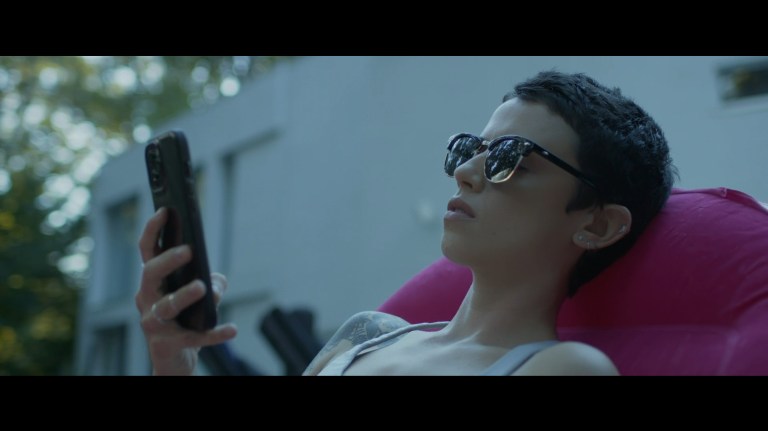
Faceless After Dark is highly recommended for fans of slasher films and psychological thrillers. It is also a must-see for fans of Jenna Kanell, and especially for fans of her role as Tara in Terrifier. This is a very different movie than Terrifier, so don’t expect anything close to the level of gore in that movie. Faceless After Dark contains some blood and a few dismembered body parts, but it’s relatively tame when it comes to the on-screen gore.
And really, Faceless After Dark is recommended for any fan of independent horror and thriller movies. It’s extremely well made, and you can see the care put into it. There’s a sentiment in the movie about making your own art whenever others aren’t supporting you, and knowing how involved Jenna Kanell was with creating the movie makes it inspiring as well as entertaining. Faceless After Dark already feels like a hidden gem that people will be recommending to each other for years to come.
Faceless After Dark is currently streaming on TVOD platforms including Prime Video. A physical media release is scheduled for June 25th, 2024.
